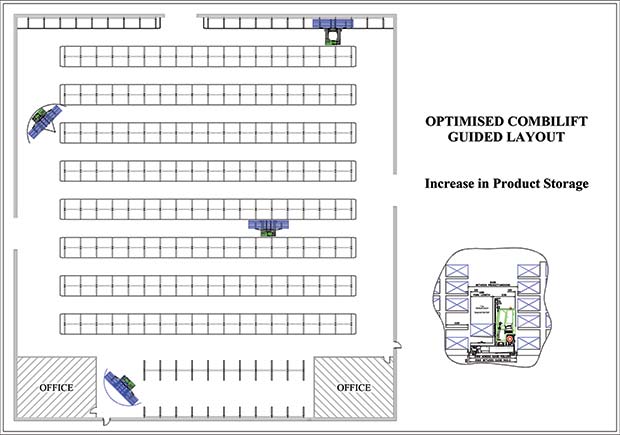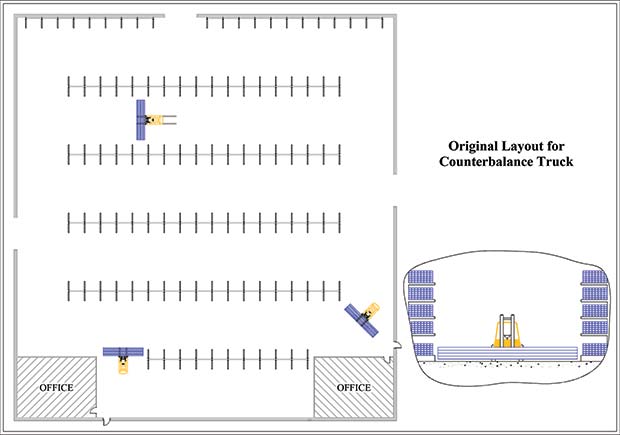Since Combilift was established it has seen itself as not just as a supplier of forklift trucks but rather as a provider of complete warehouse solutions. The company’s warehouse layout design and logistics audit service is an integral part of this offering and growing take up from customers proves the added value of this free, no obligation service.
![Layout-CL-and-AM[6]](https://warehousenews.co.uk/wp-content/uploads/2013/12/Layout-CL-and-AM6.jpg)
A team of six full time engineers at the factory are employed whose sole role is to work on this section of Combilifts business which reflects the demand for it around the world. “We are one of just a very few companies offering a fully free of charge service – others will offer basic advice and then expect a consultant to step in to proved more details – which naturally comes at a price,” says MD Martin McVicar.
Underutilisation of available space as well as equipment such as forklifts in warehousing facilities is surprisingly common according to Mr. McVicar. In some situations the design engineers have found for example that personnel picking and handling goods only spend about 20% of their daily hours on this activity whilst more than 50% of their time is spent driving around the warehouse to locate stock.
Reconfiguring racking and storage locations for specific products can yield substantial space savings in excess of 30% when handling palletised goods with the Aisle-Master articulated trucks and up to 100% when handling long loads with the Combilift 4-way range. Exploiting the full potential of available space helps to avoid costly and disruptive relocation should the volume of goods increase, reduces the likelihood of having to buy or rent extra space and dealing with complicated planning consent issues.
Whatever size of operation Combilift is dealing with, from small family firms to large global concerns, provision of data is crucial as the first step along the road to more rationalised storage. As well as detailed information on the size of loads handled – length, width, weight etc, Combilift designers evaluate the area of the footprint, the upper and lower roof / eave height, the location of entrance and exit points and loading bays, plus information on any outside areas that may also be used. Using the company’s design software and 3D simulations they then create layout diagrams, the finished appearance of which is very clear and concise and therefore instantly conveys the level of improvement that can be achieved.

As well as being of great benefit to the customer or would-be customer Mr. McVicar admits that this is certainly good for business too: “This service is free of charge and comes with no obligation to purchase our trucks. However, in practice we have found that once potential customers have gone down the route of looking to us for advice they are usually so impressed with the outcome that they buy our products.”
One company that has seen vast improvements since it took Combilift’s advice is ThyssenKrupp Energostal S.A, one of Poland’s largest trading companies which belongs to the German ThyssenKrupp Materials International GmbH. Due to a rapidly expanding sales network it embarked on a programme to extend it warehousing facilities, and uses a fleet of seven Combilifts at its site in B?onie near Warsaw.
Improved handling procedures all round were the main aims of the operations department when it looked into alternative forklifts to replace the electric 4-way trucks that made up the majority of the previous fleet.

Combilift’s engineers provided a sample layout of racking which illustrated how a much greater stock density could be achieved in the 22,000m2 storage area. They also advised introducing a guided aisle system, which was not possible when using the previous trucks. Aisle widths between racking for 6m long stillages of tubes and pipes have now been pared down to little more than the width of the truck itself, enabling extra bays to be incorporated. The combination of guide rollers on the trucks and the guide rails also makes it much easier and quicker for drivers to enter and exit the aisles and reduces the risk of product damage.




Comments are closed.